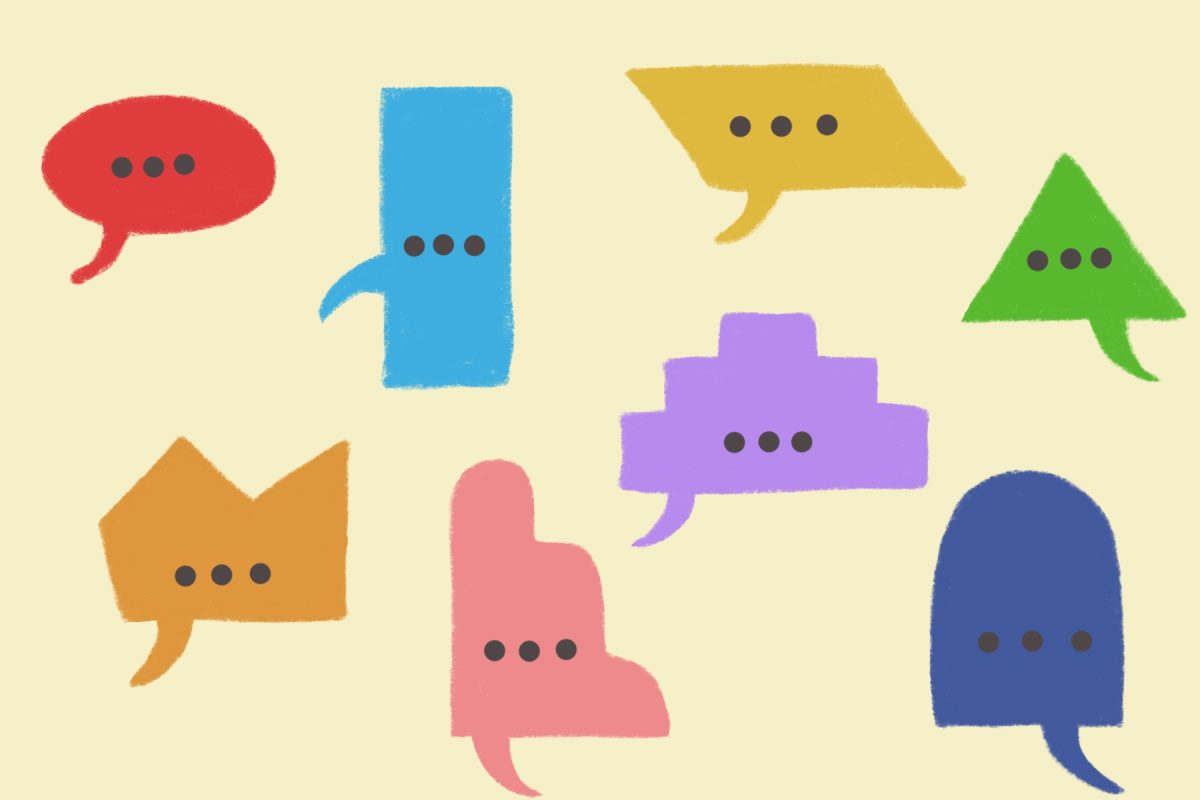Although people start learning a new language for various reasons, many believe in myths that prevent them from continuing their language-learning journey. Some myths include not being able to use it in the future, being too old, never being able to speak the language fluently and not needing to learn one because of new technologies. Here’s the truth behind some common language-learning myths.
Myth #1: “I won’t use this language when I’m older.”
Many students don’t see a use for a second language in their careers or adult life. But the notion that learning a new language won’t help later in life is false. For instance, learning a second language can help people get a job and even earn more money working that job.
Preply, a large online language learning marketplace, analyzed job postings across the United States to learn whether individuals looking for jobs had better options if they spoke more than one language.
“Multilingual employees earn an average of 19% more than employees who only speak one language,” said Nadiia Mykhalevych, author of Bilingual Bucks: The Highest Paying Cities and Languages for Multilingual Employees. Moreover, Mykhalevych found people who spoke more than one language had a greater likelihood of earning a pay raise than those who did not.
Laurel Landrum, CHS Spanish Teacher, uses Spanish daily. But even outside of school, Landrum finds opportunities to immerse herself in the language.
“I just used Spanish last week,” Landrum said. “Sometimes being in Ann Arbor, it’s easy to assume that the United States is super monolingual. And it’s not. A good portion of the United States was not the United States, it was Mexico for a long time. And if you travel to most places, your Spanish is useful. You can’t escape it. It’s everywhere.”
Myth #2: “I’m too old to learn a language.”
The idea of being too old to start learning a language is not entirely true. In a study conducted at MIT, scientists found that to be as skilled as a native speaker, you should start learning that non-native language by age 10. However, you could still be fluent if you start any time in life. The MIT study stated that after the age of 18, the ease of learning a language becomes harder, but not impossible. Scientists and researchers used to think learning a new language became much harder after the age of five, but this new information motivates people to learn a language no matter their age.
While learning at an older age, like in someone’s 50s, is more difficult, it can be done. Although learners might not be fluent and not retain specific grammar, they’ll still learn the language. A benefit of learning later in life is that adult’s studying, cognitive skills and larger vocabulary in their native language are better than when they’re 10. Learning a language at any age is helpful and is a great way to challenge the mind.
Myth #3: “I’ll never speak fluently.”
The impression that it’s unattainable to communicate fluently in a foreign language is incorrect. Whether at home or traveling, the opportunity to practice communication skills with others who speak the same languages is both enjoyable and useful. Landrum sees her students want to be more proficient, and while she acknowledges that it’s difficult to achieve, being able to communicate is a realistic goal and something different than fluency.
“Being able to communicate is an intermediate skill,” Landrum said. “I think what’s motivating people is the thought of just being able to talk and have a conversation. That’s plenty easy to do without having accurate grammar.”
Landrum feels that many language learners can speak and get the point across with lots of mistakes and just vocabulary words. Many of her students think everything they say has to be perfect; but to Landrum, the most important thing is being able to hold a conversation. Landrum believes fluency is not the same as communicating.
“For native speakers who are listening, it’s preferable that you have fluency and you keep speaking with mistakes than to pause and think about how to conjugate in the third person plural,” Landrum said. “So you can have tons of mistakes. The goal is just to get a point across.”
Myth #4: “Learning a language isn’t necessary if I have Google Translate.”
Some may think that it’s not necessary to learn a new language with modern linguistic technologies like Google Translate. However, learning a new language can be beneficial to the brain even without knowing the language and its entirety. According to Cambridge University Press & Assessment, learning a second language can improve learning in school, increase the ability to focus, strengthen short and long-term memory skills, enhance listening skills when communicating with others and boost creativity.
Linguistic tools like Google Translate bring additional downsides with the potential of mistakes and misunderstandings. Translation tools do not provide multiple suggestions and frequently make grammatical errors that could be avoided with proper language instruction. Longer sentences usually don’t translate well, so while these tools could be used for quickly knowing a few words, they cannot carry a conversation. Practicing a language for multiple years provides cultural insights and mannerisms that translation tools can’t replicate.
—
Learning a foreign language is beneficial in multiple ways, including improving job opportunities, the ability to communicate effectively with others and improving memory and thinking skills. Being understood and expressing yourself is more achievable than learning specific vocabulary and grammar. Misinformation about learning a foreign language has spread across the world and become a norm, with new technologies making it easier to communicate and much of the world’s population speaking English. By looking beyond these language-learning myths, people can form meaningful connections around the world and strengthen their minds.












